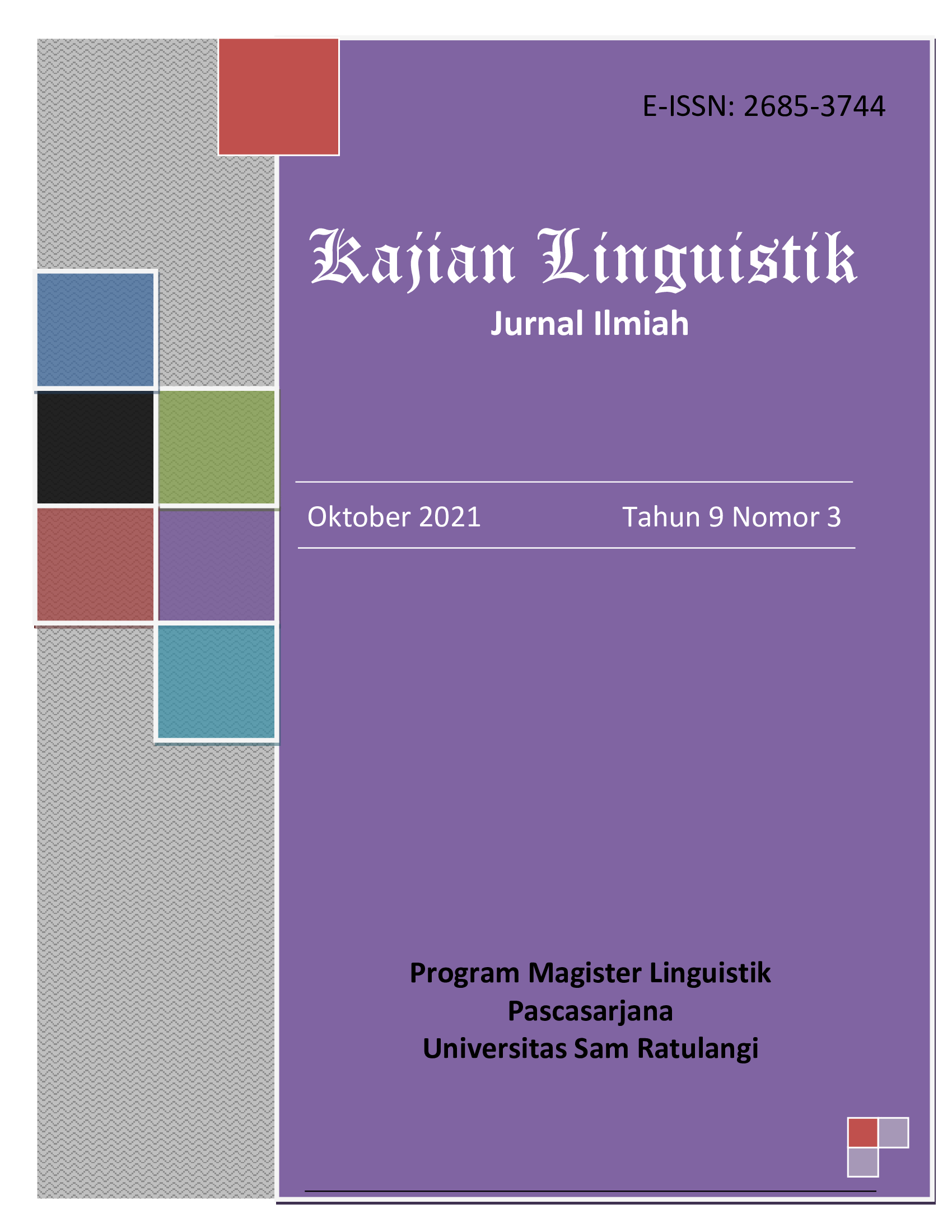Deiksis dalam Bahasa Tontembuan
DOI:
https://doi.org/10.35796/kaling.9.2.2021.38943Abstract
Research on Tontemboan deixis is focused on describing the form and function of deixis. This type of research is qualitative by using descriptive methods, especially in collecting data, describing data scientifically, and producing linguistic rules in a linguistic manner. Most of the data used for analysis needs are taken from the field through informants and data from the library is taken from books and available research results that are used to complement the data. Data collection techniques used direct observation techniques, tapping records, notes, and interviews. For data analysis, the inductive method was used to obtain results which indicated that in terms of deixis forms could be morphemes, words and phrases. The form of morpheme is found in the possessive form. The form of a phrase appears on the deixis which states the past time (kawi? makasa ‘day before yesterday') and the future time (wo?ndo ang kadouan 'the day after tomorrow', ang kateluan ngando 'two days after tomorrow', the speed of ngando 'three days after tomorrow'). Some forms of deixis have free variations, such as the time markers for the coming time for the word ngando mei 'two days after tomorrow' and the time for ngando mei / epat ngando mei 'three days after tomorrow' and the personal markers for the third pronent sera / sela / seila 'they', which the shapes are interchangeable. Unless the form of sera / sela / seila 'they' is indicated by speakers who are in the area of the makela? I use the word seila 'they'. In terms of function, deixis has a function according to the type of deixis. In the Tontemboan language there is only one form of deixis which refers to him being male and her being female. Deixis which shows the place or space there are 3 deixis, namely ambi? 'here’, am bitu 'there' and asyianonge 'there'. The Tontemboan language recognizes an exclusive form of cami 'we' and an inclusive form of 'our'. Starting from Frei's hypothesis, the cultural link with the Tontemboan language deixis can provide an overview of the extent of the existing cultural levels.Â

